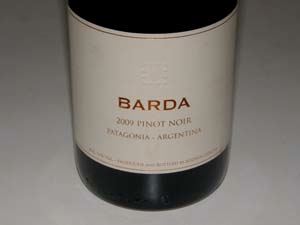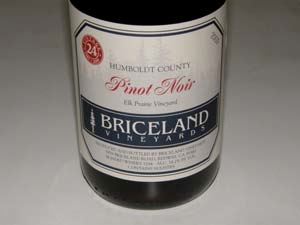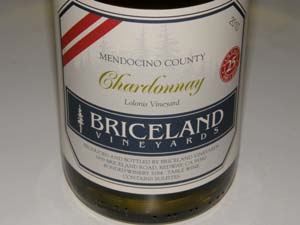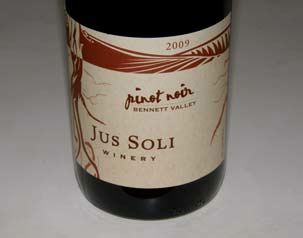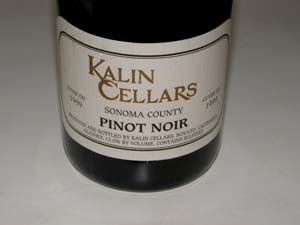Wines Off The Beaten Track
Bodega Chacra is located in the Río Negro Valley of northern Patagonia, 620 miles south of Buenos
Aires, an area that for the most part produces basic reds. Río Negro shares the same latitude with most of
New Zealand. In 2004, Piero Incisa della Rochhetta, whose family owns Tenuta San Guido, the producer of
Sassacia, purchased the first of Bodega Chacra’s vineyards, Treinta y Dos, a small, abandoned vineyard
planted in 1932. This vineyard of gnarled Pinot Noir vines was planted on its own rootstock. The vineyard’s
porous soils are dominated by coarse alluvial pebbles and significant limestone content. Piero Incisa has
discovered and bought two other old wine Pinot Noir vineyards which are the source of two Bodega Chacra
single-vineyard wines beginning with the 2006 vintage. The first, from a vineyard planted in 1955 called
Cinquenta y Cinco, and the second, from vines planted in 1967 called Sesanta y Sete. A fourth wine, reviewed
here, named Barda, is produced from declassified components of the single vineyard wines as well as wine
from a recently planted 10-acre vineyard on the original property. Farming is organic and Demeter certified
biodynamic. In 2005, a new winery was constructed at the site of the 1932 vineyard. The inaugural releases
came in 2006. The winemaker is renowned Danish-South African vintner Hans Vinding-Djers. The wines are
fermented with indigenous yeasts in small cement tanks with some lots undergoing carbonic maceration. The
wines are exported to the United States by Kobrand. For the full story, consult an article written by Natalie
Guinovart, CWE, DWS, titled “Bodega Chacra,” in the Sommelier Journal, March 15, 2011.

2009 Bodega Chacra Barda Patagonia Argentina Pinot Noir
14.0%
alc., 4,657 cases, $31.
·
Moderate garnet color in the glass. Lovely
aromas of black cherries, raisin and rose petals. Black cherry essence
with a dusting of firm tannins and an underpinning of savory mushroom
flavors. Silky in the mouth with an appealing earthiness and minerality
finishing with some persistence. Very unique and unlike any California
Pinot Noir I have had. Better the next day from a previously opened and re-corked
bottle. Very good.
Briceland Vineyards. I recently wrote a feature on Briceland Vineyards and its winemaker Joe Collins
(www.princeofpinot.com/article/1012/). He is crafting about 1500 cases annually of superlative wines at
reasonable prices from an area in California that is largely ignored by the wine cognoscenti. More than half of
the dozens of wines Briceland has entered in prestigious wine competitions have won significant awards. Joe
has over 35 years of winemaking and winegrowing experience. In 1990 and 1991, he was the individual Grand
Champion at the California Wine Tasting Championships. Heard enough? The wines are ridiculously
inexpensive considering the quality. The winery’s website presence at www.bricelandvineyards.com is
minimal so to obtain the wines, get on the phone (707-923-2429) or e-mail assistant winemaker Andrew Morris
at andrew@bricelandvineyards.com. You should try these wines. It is time we celebrate the honest, special
wines from small wineries that never receive the press that the hi-profile producers garner.

2009 Briceland Vineyards Elk Prarie Vineyard Humboldt County Pinot Noir
14.2% alc., 125 cases, $27.
·
Moderately
light reddish-purple color in the glass. Bright aromas of black
cherries, blueberries, sandalwood, forest floor and vanillin
increasing in appeal over time in the glass. Complex and
nuanced, with flavors of raspberries, ripe strawberries, cherries,
baking spice, cinnamon, and sassafras. Strikes a chord on the mid palate,
elegantly soft in texture, finishing with modest but pleasing intensity. There is
plenty going on in this chameleon of a wine which changes constantly in the
glass. Outstanding.

2010 Briceland Vineyards Spirit Canyon Vineyard Mendocino County Arneis
Table wine, $17.
Arneis is often called the “white Nebbiolo.” This Italian grape was discovered sparsely interplanted
with Nebbiolo grapes in the Italian Piedmont region. Some say because the grape ripens earlier than
black Nebbiolo, it was offered to marauding bees plaguing the vineyards. Recently the grape has
found its way to California where it is planted along the Russian River south of Ukiah by Glenn
McGourty at his Spirit Canyon Vineyard.
·
Pale straw color with a hint of peach shade in the glass.
Aromas of green apple, baked pear and marzipan. Light to medium-weighted and creamy on the palate with
flavors of green apple, pear, apricot and a slightly grassy, nutty note. An easy drinking wine that would be an
ideal aperitif or the perfect accompaniment to shellfish. Surprise your friends! Very good.

2010 Briceland Vineyards Lolonis Vineyard Mendocino County Chardonnay
Table wine, $21. Crafted from certified
organically grown grapes.
·
Pale straw color in the glass. Fresh
aromas of rocky stream, lemon curd and buttered brioche.
Slightly creamy on the palate with restrained but satisfying flavors
of pears, white peach and citrus complimented by subtle oak.
Flows off the back of the palate like a silk sheet in retreat. Beautifully crafted.
Other wines.
2008 Rippon Vineyard Hotere White Wine Lake Wanaka Central Otago Osteiner
11.0% alc., $14, screw
cap. Osteiner is a variety born of Riesling and Sylvaner, planted at Rippon since the earliest days. Imported
by Station Imports, Colorado Springs, Colorado.
·
Very pale straw color in the glass. Aromas of petrol (not a
defect) and old book. Delicate flavors of tropical citrus, lemon and white peach with a noticeable petrol
presence. A unique wine with tight, vibrant acidity, soft and light in the mouth, with a very dry finish. Would be
excellent with white fish or shellfish. Good (+).

2009 Jus Soli Winery Bennett Valley Sonoma County Pinot Noir
13.6% alc., 75 cases, $30. This Santa Rosa, California producer’s
name is derived from the Latin, “Law of the Soil.” Gold Medal winner at
the 2011 San Francisco Chronicle Wine Competition.
·
Moderate
reddish-purple color in the glass. Shy aromas of berry jam on toast,
berry cobbler, seasoned oak and leaf. Pleasing flavors of raspberry
coulis and strawberries with subtle accents of savory herbs, vanilla and red
cherry Life Savers. A lighter, elegant wine with supple tannins that is easy to like.
Very good.
2008 Matanzas Creek Winery Bennett Valley Sonoma County Pinot Noir
14.5% alc., $24. Matanzas
Creek has been quietly producing Pinot Noir for many years.
·
Moderate reddish-purple color in the glass.
Darker berries and cherries, modestly oaked, are offered in a medium intensity style with soft tannins and a
sour cherry finish. More oak-driven the next day from a previously opened and re-corked bottle. Drink now.
Decent.
1999 Kalin Cellars Cuvee DD Sonoma County Pinot Noir
13.0% alc., $45.
The current Pinot Noir release from Kalin Cellars. The fruit is sourced from the
Demostene Ranch in Alexander Valley, the oldest Pinot Noir planting in that
region.
·
Moderately light reddish-purple color in the glass with mild bricking of
the rim. Aromas of oiled wood, spice, pipe smoke and soy sauce. Dark, redder
fruits with secondary age related flavors of bacon fat, soy sauce, oak, mushroom
and cassis. Moderate intensity with a crisp, juicy finish. Holds up nicely in the
glass over time despite its age. Will thoroughly please old wine lovers and really
shows off the umami flavors that old Kalin Pinot Noir is known for. Very good.
|
|
|



